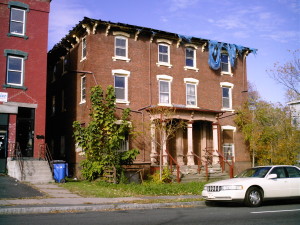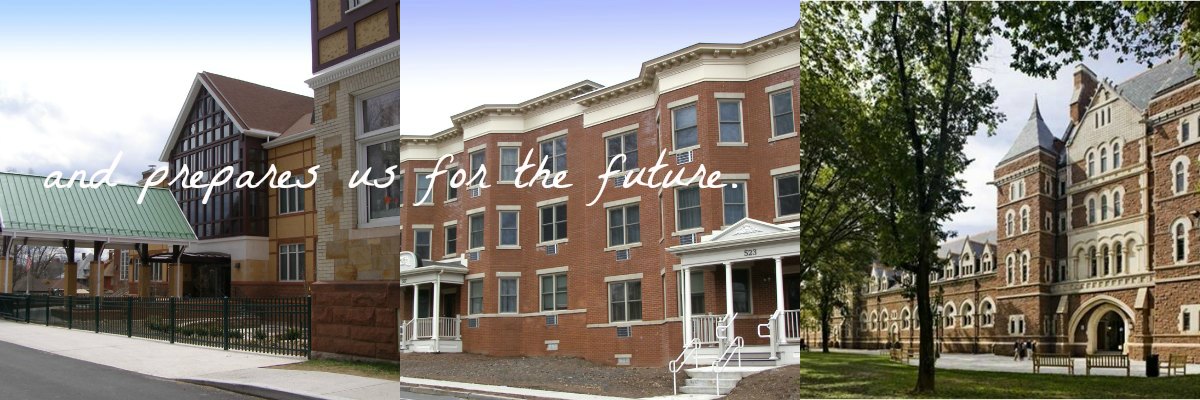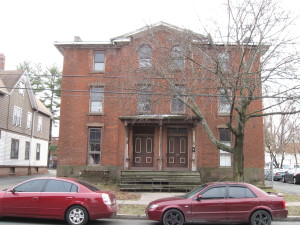 In 2011, I founded the Land Bank of Indianapolis, now known as Renew Indianapolis, which was created to address the festering problem of vacant and abandoned properties in Indianapolis, blight to be sure. At the time there were some 5,000 properties which is a seemingly huge number until you realize that the land mass of the consolidated city of Indianapolis is basically 12 times the size of Hartford.
In 2011, I founded the Land Bank of Indianapolis, now known as Renew Indianapolis, which was created to address the festering problem of vacant and abandoned properties in Indianapolis, blight to be sure. At the time there were some 5,000 properties which is a seemingly huge number until you realize that the land mass of the consolidated city of Indianapolis is basically 12 times the size of Hartford.
We worked for nearly two years to analyze the negative impact on the city and why did it matter. Working with the city administration, corporate, community and elected officials we educated the public on the economic impact that blight effects on the fiscal life of a city. We had a very easy job of proving to neighborhoods that the negative impact of vacant and abandoned property is real. If the house next door is empty and the owner non-existent the concerns of personal safety are a major factor in an overall decline of a community wellbeing. Morale and a sense of belonging is truly tested as one stands on a front porch and views a street of bad repair and a lack of urban commitment. Along with blight comes arson, drug deals, squatters and prostitution.
Working closely with a relatively new non-profit, the Center for Community Progress, we learned that there are cities with far greater problems like Detroit, Cleveland and Flint. The issues we face here in Hartford are totally similar but for the scale.
We now know that a property’s value is diminished by 2.5 % if within 200 feet of a vacant structure. The cost to a municipality is staggering. South Bend, Indiana calculated that 28 % of its public safety budget was directly related to problems caused by vacant and abandoned properties. Police and fire runs are routine; drug activity will always find the opportunity of no witness and little resistance.
On Monday evening Mayor Luke Bronin laid out a fairly bleak fiscal picture for Hartford yet among his priorities was the need to address blight. The Preservation Alliance recognizes its role to play as a critical partner in reducing neighborhood blight. Our strategic plan declares our commitment to community economic development as the basis for our work here. Of the 400 Hartford properties listed as vacant, nearly half are located in historic districts. On this year’s list of our Top Ten Endangered properties, 80% are vacant. We believe that we can help to effect positive resources for communities:
- During 2015 our Technical Assistance team has become a property owner resource for design and cost-effective approach to rehabilitation. We have worked closely with the Development Services staff to ease the process of getting a building permit to do work on historic properties including consulting with the Hartford Preservation Commission.
- Connecticut has an amazing historic tax credit program which is available to property owners located in designated districts. This is a tremendous financial tool which can encourage a property owner to renovate and rehabilitate with additional funds for a rehabilitation project. We now routinely offer our services to consult on navigating the process to utilize tax credits.
We are eager to be part of the Hartford’s solution to blight and welcome you to join us!
[jetpack_subscription_form]








I lived on Buckingham Street back when, and we had blight issues. Resolving them improved safety, housing values, neighborhood pride and our sense of community. Thanks for attaching actual numbers to blight – impact on city budgets and property value – which is very helpful. That and the reminders about tax credits and technical assistance should make property owners take action.